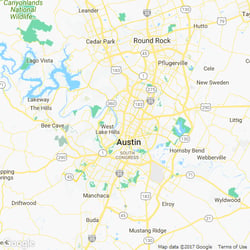Easily Book Lawn Care in Austin, TX
Order Austin lawn mowing and other lawn services near you from the comfort of your screen.

How LawnStarter works
Get started in under 5 minutes

View Pricing

Choose your service date

Let our pros do the work
Why LawnStarter?
Happy customers all over Austin



Austin Lawn Care Facts & Resources
Everything is pretty much up and swing now, your grass is probably growing at a controllable rate so make sure you get to mowing it!
Local lawn care resources
Popular Grass Types in Austin
| Bermudagrass | 59% |
| Zoysiagrass | 11% |
| Centipedegrass | 11% |
| Buffalograss | 8% |
| Perennial Ryegrass | 5% |
| Tall Fescue | 4% |
| Kentucky Bluegrass | 3% |
| Long (6-7 inches) | 5% |
| Medium (4-5 inches) | 29% |
| Short (2-3 inches) | 65% |
Lawn Care Facts
| Average Yard Size | 7,967 sq ft |
| Average Mowing Price | $47.69 |
| Average Customer Review | 4.9 / 5.0 |
| Weekly Cuts | 5.0% |
| Biweekly Cuts | 91.0% |
| Monthly Cuts | 4.0% |
| Lawns Fertilized | 7.0% |
| Lawns with Leaf Removal | 12.0% |
| Aerated Lawns | 8.0% |
| Yards with Cleanups | 10.0% |
| Days That Are Sunny | 51% |
An app for lawn care, seriously? You betcha! Stay up‑to‑date on your lawn wherever you go.

Easy, Affordable Lawn Care Services in Austin
While Austin is great for its year-long warmth and short winters, this does mean that lawn owners need to put in just as much work. Tackling that with the challenges of water-restrictions and you're in for a real challenge. If you worry about your lawn's health amidst the Texas drought, unburden yourself by hiring a team of LawnStarter professionals. Your freedom this weekend is just a click away.
Best Grass Types for Austin: The best grasses to plant in Austin are St. Augustinegrass, Zoysiagrass, bermudagrass, and ryegrass.
Winter Lawn Care for Austin: Aerate, overseed, and fertilize your lawn in preparation for winter. Also remember to clear your lawn of stray branches, leaves, and toys. You can also add additional products like bio-stimulants to your lawn. This increases the microbial activity and nutrients of the soil, encouraging healthy growth without the risk of inviting diseases and insects.
Watering With Restrictions: Water your grass on a consistent schedule, which ensures that you don't forget to water. Also, make sure that you avoid watering between noon and 6 p.m., which are times of peak heat and sunlight. Watering early in the day helps your grass cling to the moisture well into those hot afternoons, instead of attempting to absorb water that is already evaporating. Watering your lawn deeply, not frequently, is best for the grass and the water shortage.
How LawnStarter Can Keep Your Yard Looking Great: In addition to routine lawn maintenance, we also offer landscaping services, bush and tree trimming, weed control, fertilization, aeration, and seeding.
It's easy to get started with LawnStarter. Just call, click, or download our app for a quick and customized quote. We'll send a pro to take care of all your outdoor chores within a few days.
Austin, TX Top 3 Lawn Care Pros



Recent Reviews
We encourage feedback from all customers to ensure we are delivering the best service possible.












Service Recommendations in Austin
LawnStarter pros will let you know what your lawn needs. Here are some recent recommendations for lawn care services in Austin, TX.
Top Austin, TX Lawn Services of April 2025



